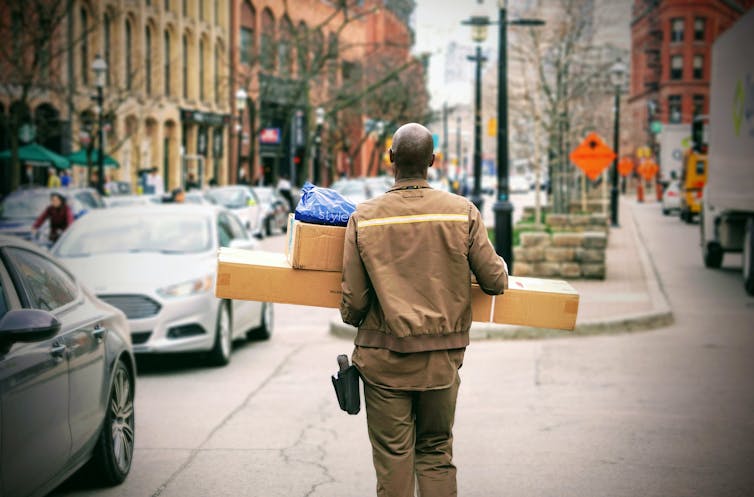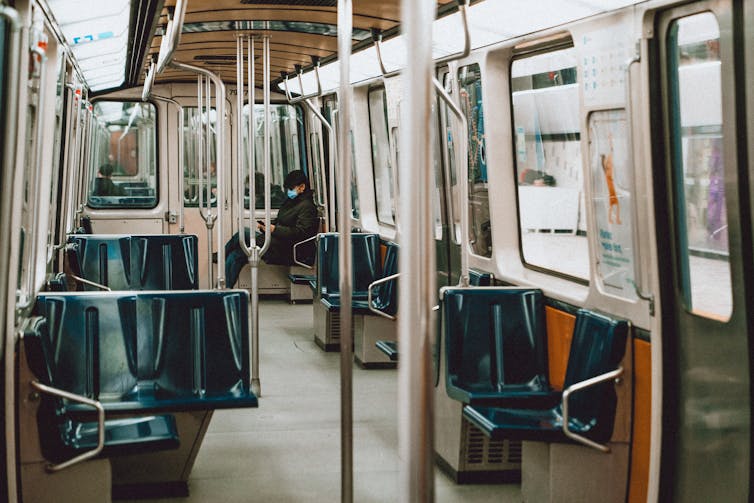
(Maarten van den Heuvel/Unsplash)
The COVID-19 pandemic is disrupting consumer habits. Canadians developed an intense interest in baking in the early days of the crisis, leading to flour and yeast shortages. They bought less sunscreen in the absence of tropical vacations, and they are dressing down in sweatpants while working over Zoom.
Consumer habits form around regular patterns of daily activity such as commuting, working and recreation. As these patterns change, so do consumer habits.

(Manny Fortin/Unsplash)
These changing habits are having a significant impact on independent, Main Street retailers, particularly during the holiday season. To adapt in 2021 and beyond, retailers need to strengthen their ability to connect with existing customers and capture new customers as habits change — perhaps permanently.
There is no doubt that COVID-19 is putting a great deal of stress on many small Canadian retailers. Forced shutdowns were a major challenge in March at the start of the pandemic, and then again for certain regions, including Toronto and Peel in Ontario, since November.
As the crisis hit, I started interviewing independent retailers to understand the challenges they were facing in an ongoing study.
Consumers developing new habits
Habits are repetitive consumer behaviours that are tied to commuting patterns, hobbies, brand loyalties and preferences, as well as social behaviour. COVID-19 has caused significant disruption to consumer habits because people are working from home, restricting social behavior and travel, and in general reflecting on what is most important to them.
These disruptions to consumer habits present both risk and opportunity for retailers. On the one hand, retailers are dealing with long-time customers whose habits are changing. For example, one comic book retailer in a medium-sized southwestern Ontario city noted that some of its comic book collectors suddenly stopped collecting — the result of personal reflection, perhaps, or shifting priorities.
Others had doubled down, spending more money on comics they might have otherwise spent on trips to a Comic-Con conference.
These changing habits are not isolated to comic books. A Dalhousie University study found that 4.2 million more Canadians are ordering food online than they were before the pandemic and this trend isn’t expected to dissipate.
More generally, customers are picking up new habits such as baking and or other leisure-time hobbies in the absence of other options, like going to the movies. These are all changes that influence consumption habits.
Stay close to customers, double down on service
For retailers seeking to benefit from these new habits, this is a time to stay very close to customers and double down on service and engagement. Be inquisitive and thoughtful about how to reach existing and new customers in creative ways.
This might seem counter-intuitive in a time of social distancing, Plexiglas and face masks. However, retailers have demonstrated tremendous creativity in maintaining and creating connection with customers. They’re reaching customers using social media, including Instagram and Facebook.
One women’s fashion retailer in a small southwestern Ontario city typically holds fashion shows to highlight new seasons of clothing. With COVID-19 restrictions, the show shifted online.
Others are using Facebook Live or Zoom calls to show inventory to customers, either en masse or through personal “tours.” Well-established retailers are even using email and telephone to reach loyal customers.
In delivering products and services, many local retailers have sought to add value for stressed-out customers. From jewellers to kitchen supply stores, retailers hand-delivered products to customers, strengthening relationships in the process.
At physical locations, retailers offered curbside pickup and appointments to show products to customers who were nervous about COVID-19 or at high risk. Providing a safe environment for customers has been the top priority for most retailers in my study so far.
Keep online presence focused on Main Street
There has been a big move towards online shopping during this pandemic, even among smaller retailers. It’s expected that this online focus will remain after COVID-19.
However, while an independent retailer’s online presence is critical, online options risk blurring the line between Main Street shops and behemoths like Amazon. Customers who shop at smaller retailers are different, looking to shop local and benefit from personal service, and so independent retailers need to keep the focus on these value propositions, using the internet as a support.
This means recognizing that an online presence isn’t a panacea for Main Street retailers, but rather another tool to engage customers and strengthen human connection.
Many Main Street retailers are keenly aware of the risk of losing customers permanently due to COVID-19, and are focusing on building a strong online footprint in support of their physical, community-based presence. As we head into 2021 and the end of the pandemic is in sight due to new vaccines, those efforts are particularly important.![]()
Brent McKnight, Associate Professor, DeGroote School of Business, McMaster University. This article is republished from The Conversation under a Creative Commons license. Read the original article.










